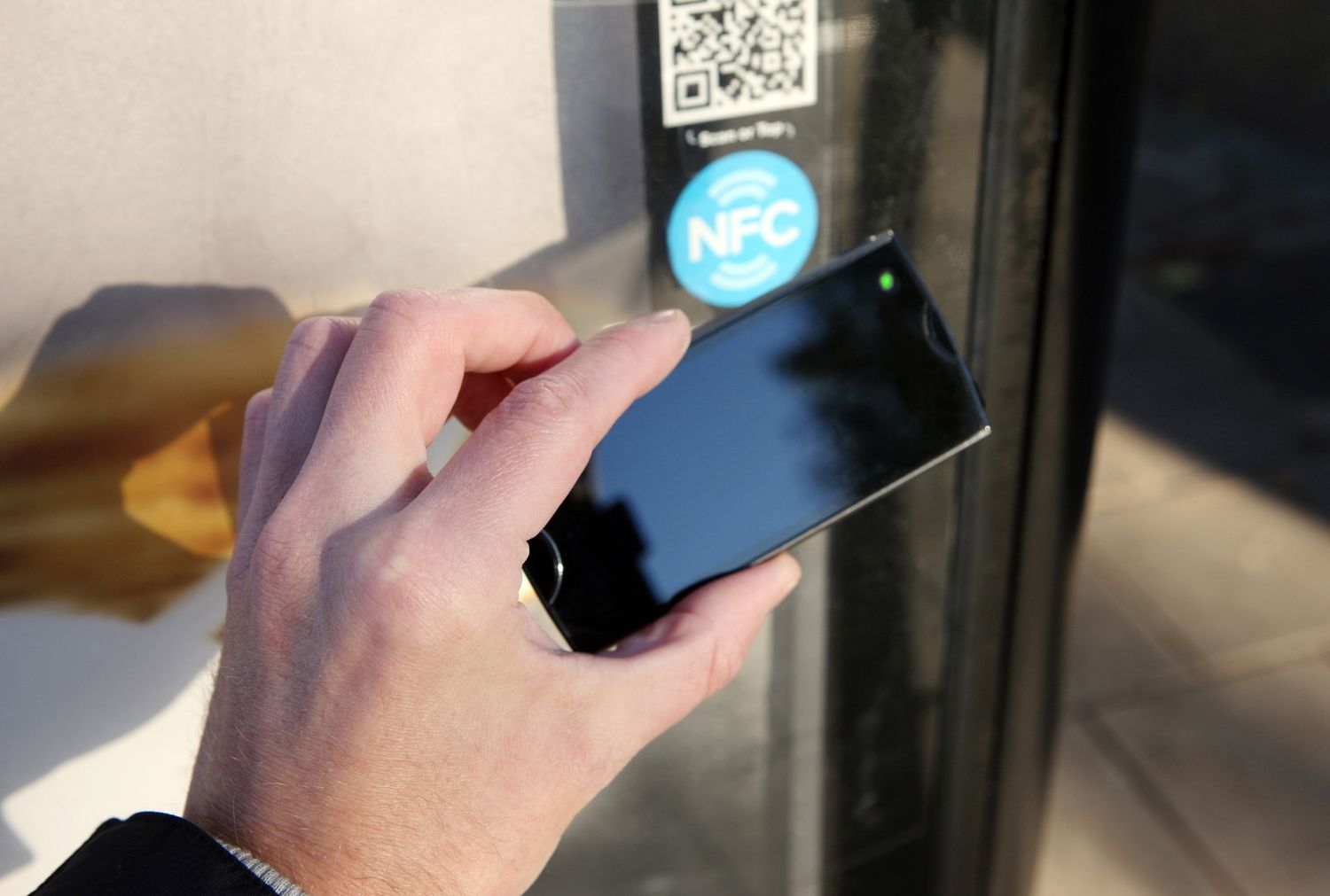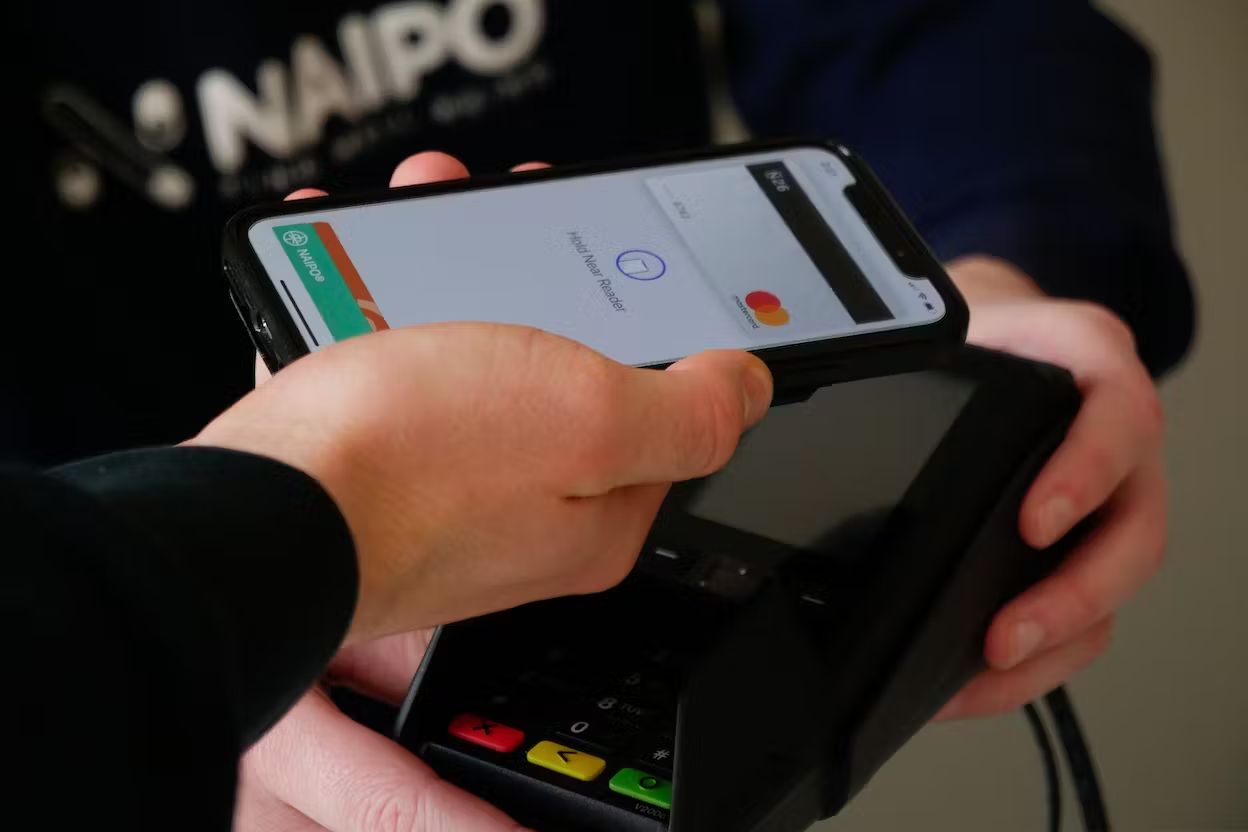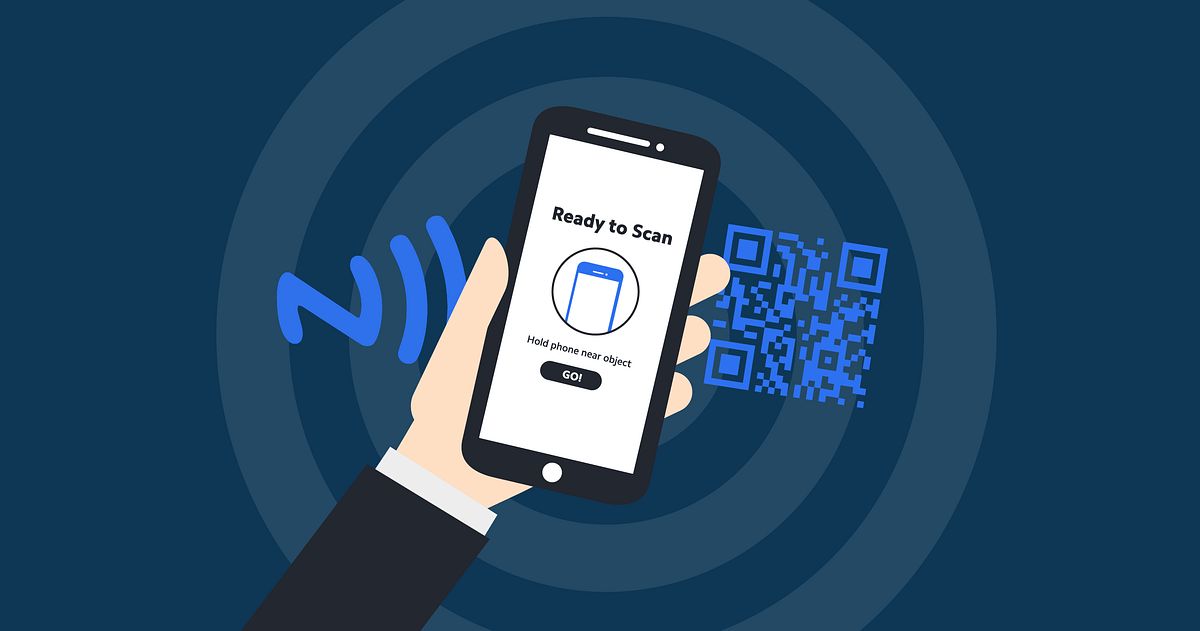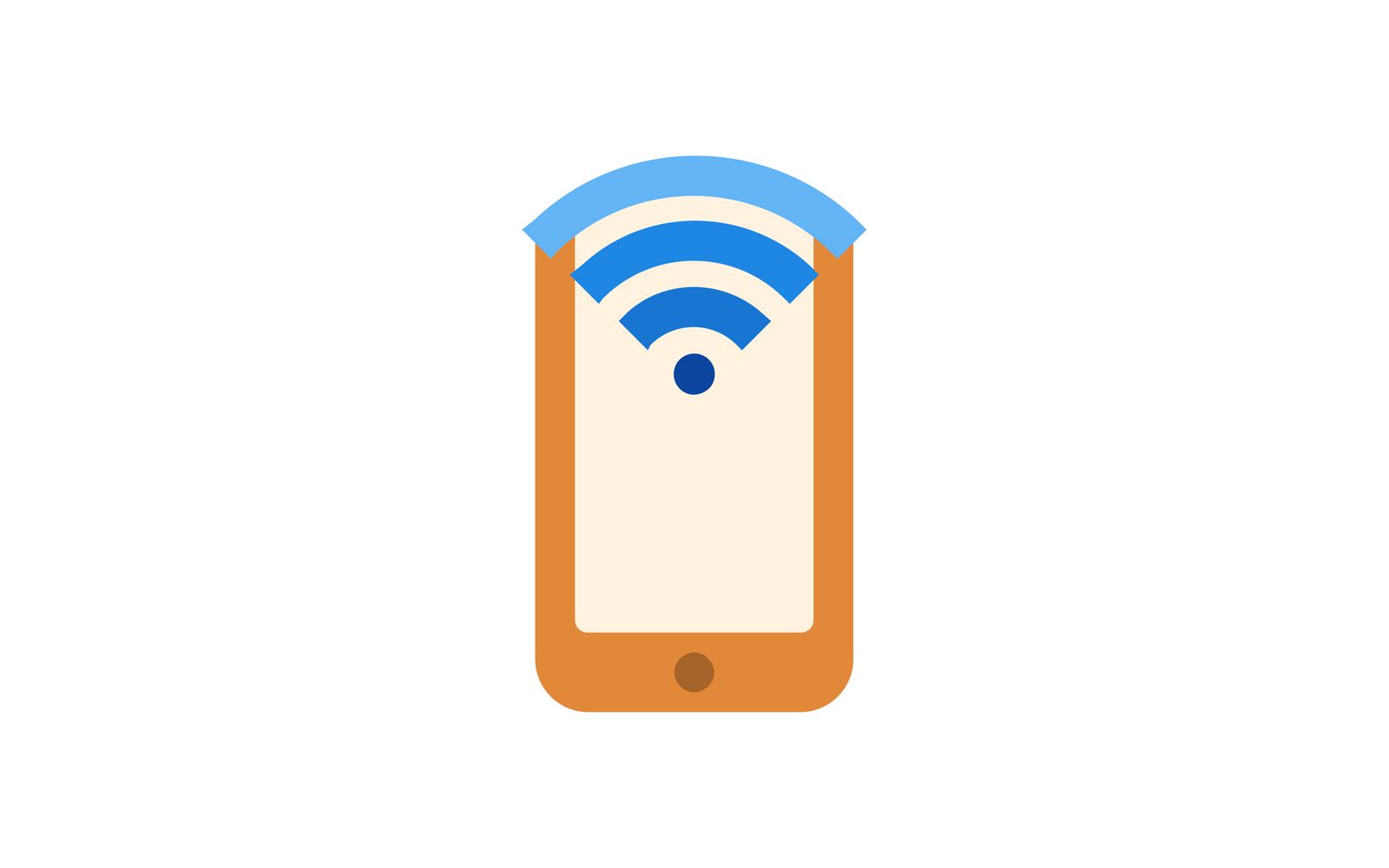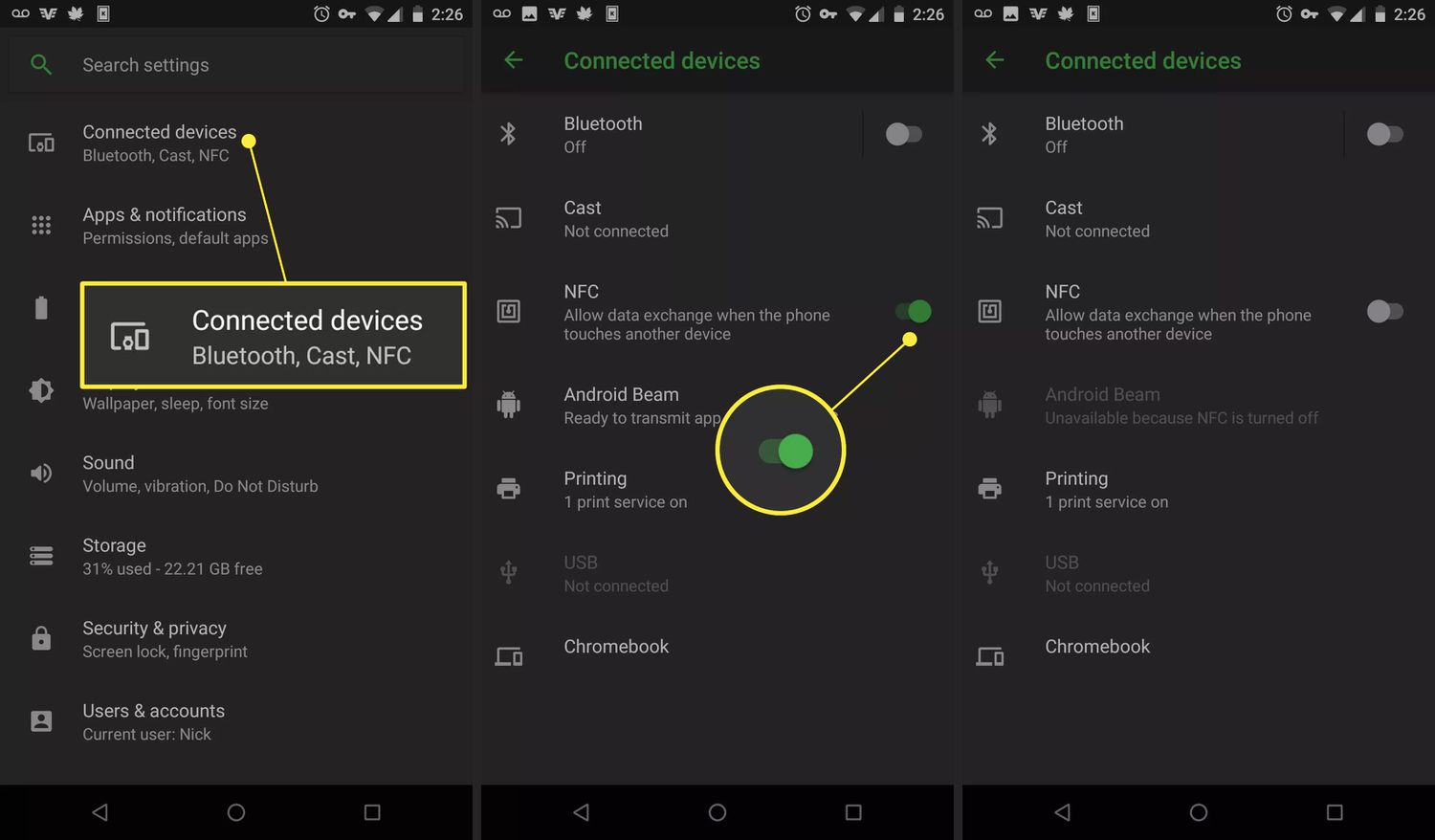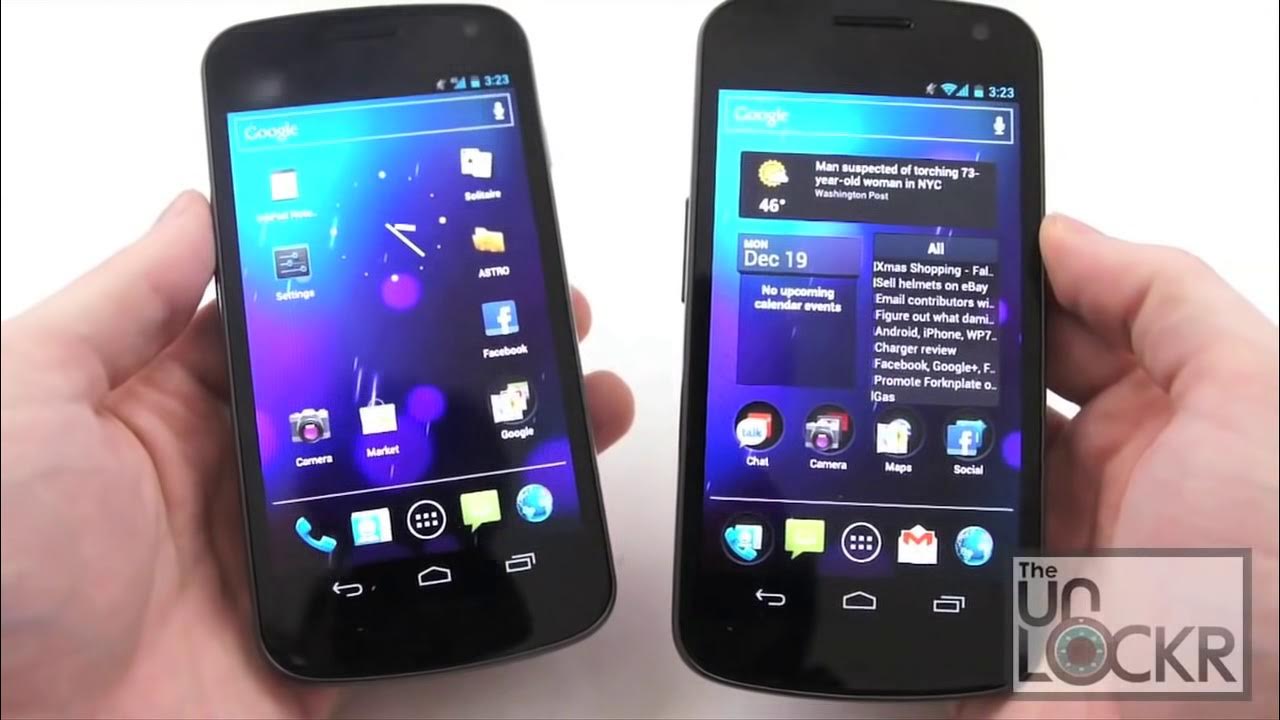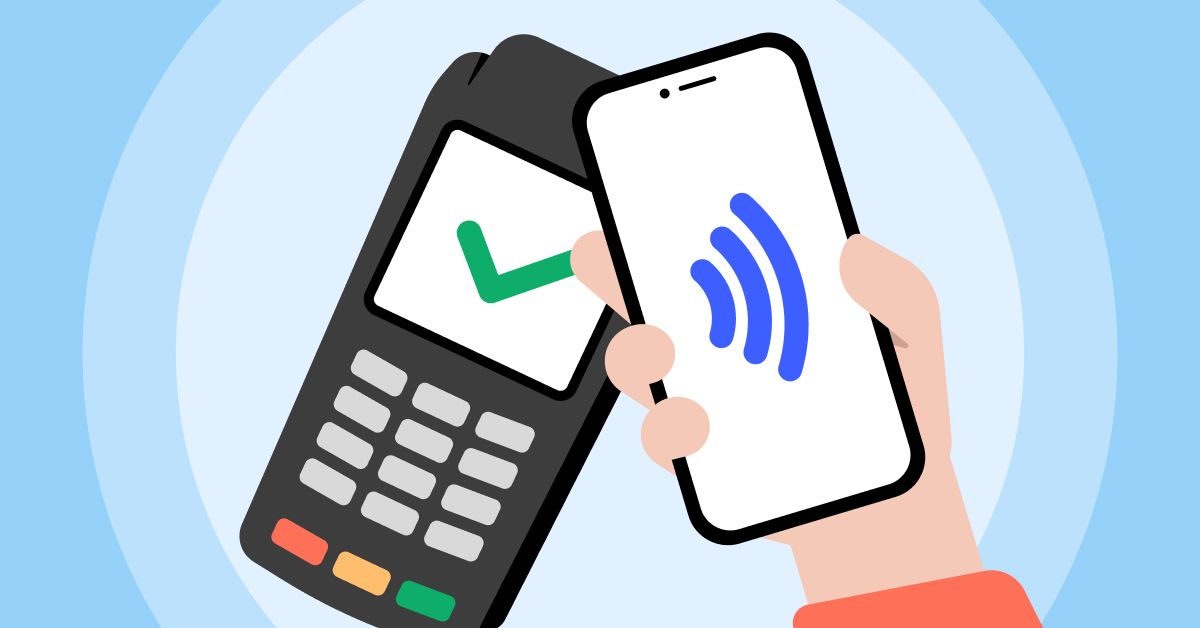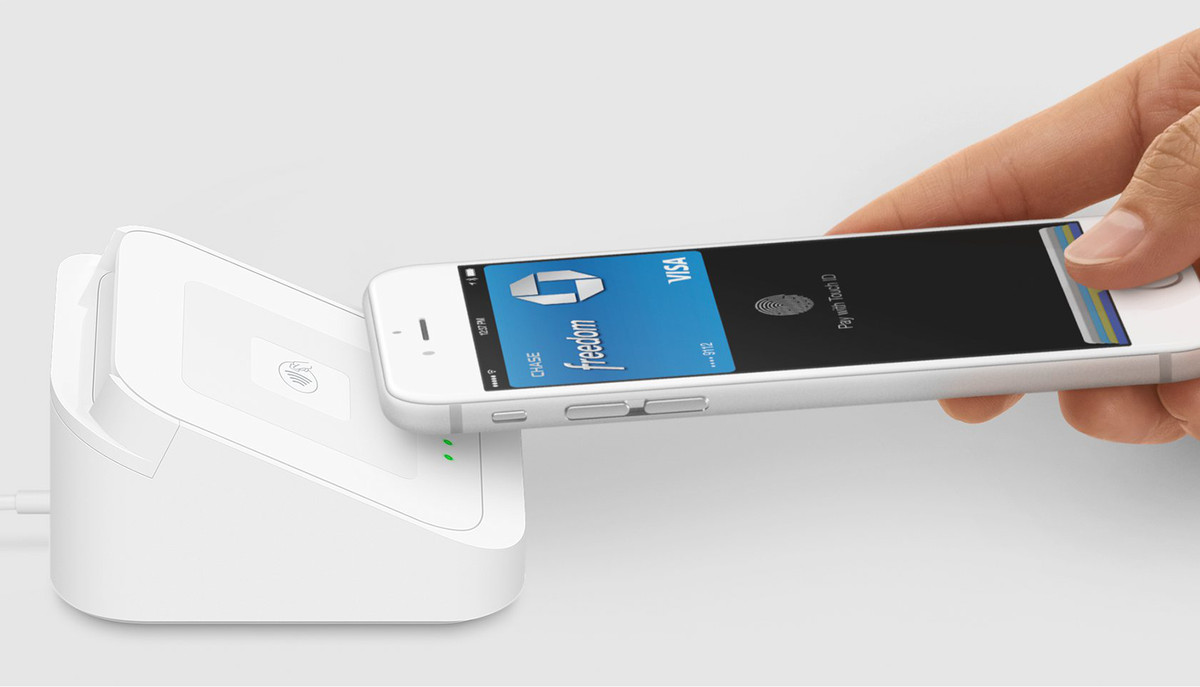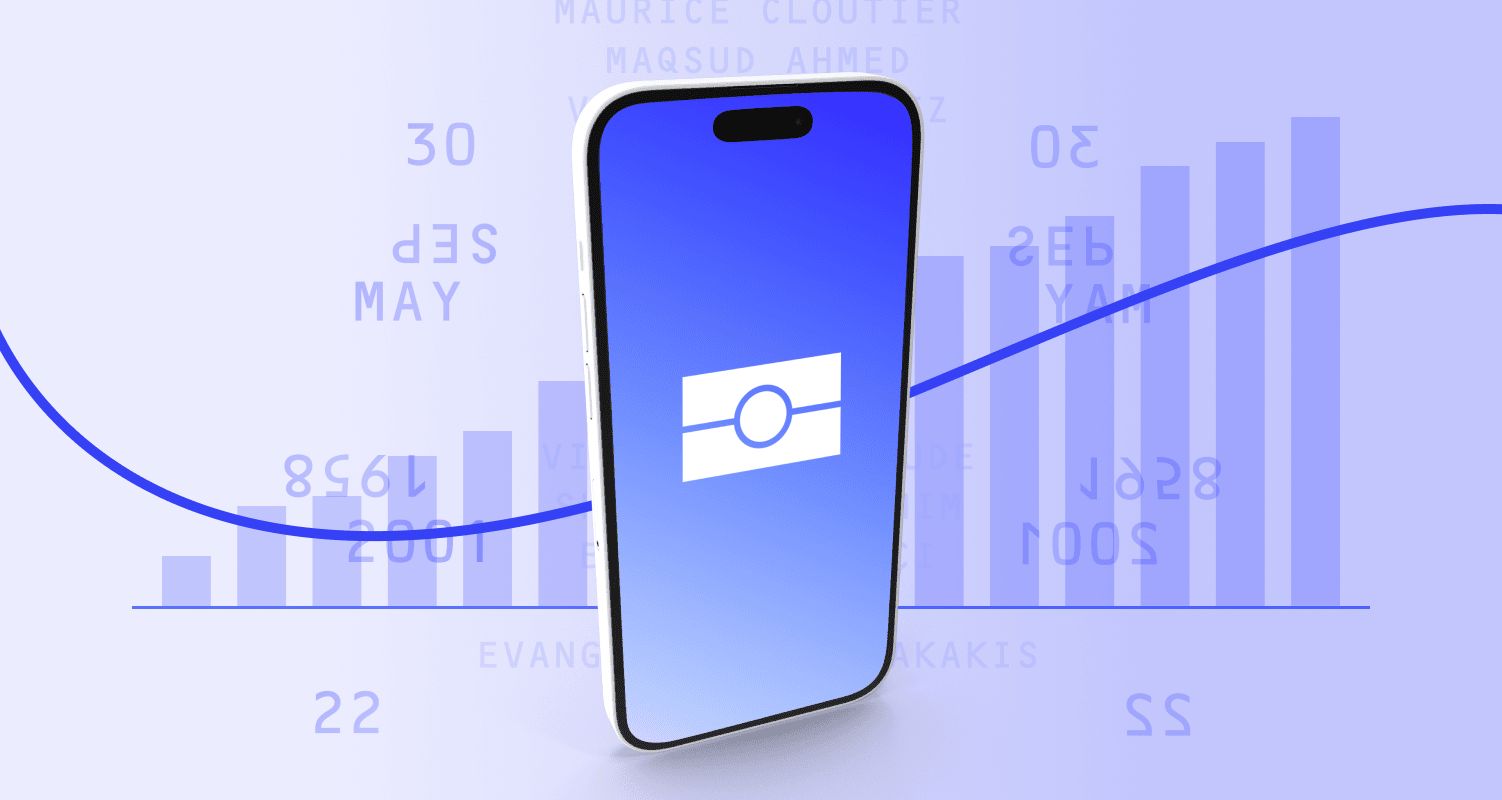Introduction
Near Field Communication, commonly known as NFC, is a remarkable technology that allows devices to communicate wirelessly within close proximity. This technology has gained significant popularity and is widely utilized in various industries due to its convenience and versatility. NFC is particularly prevalent on Android devices, which have integrated NFC functionality into their operating systems.
With NFC, Android users can perform numerous tasks such as making payments, transferring data, accessing digital content, and engaging in seamless interactions with compatible devices by simply tapping their smartphones or tablets together. The possibilities with NFC are endless and continue to expand as developers find innovative ways to utilize this technology.
Enabling NFC on your Android device is straightforward and can be done through the device settings. Once activated, users can read information from NFC tags or write their own data onto compatible tags. The Android NFC API provides developers with a robust set of tools and resources to take advantage of NFC capabilities in their applications.
One of the key features that Android devices offer is Android Beam, which allows users to instantly share content, such as web pages, contacts, and media files, by simply touching two NFC-enabled devices together. This feature enhances the overall user experience and facilitates seamless content sharing between Android users.
NFC has found its way into a wide range of industries and applications. From contactless payments using mobile wallets to smart home automation systems, NFC is revolutionizing the way we interact with technology. It has also made its mark in sectors such as transportation, healthcare, retail, and even entertainment, opening up new possibilities for businesses and consumers alike.
In this article, we will explore the world of NFC on Android devices. We will delve into how to enable NFC on your Android device, how to write and read NFC tags, as well as dive into the Android NFC API and Android Beam. We will also discuss various use cases and applications of NFC, showcasing its potential and the exciting future it holds.
What is NFC?
Near Field Communication (NFC) is a short-range wireless communication technology that enables devices to exchange data when they are brought close together. NFC operates on radio frequency identification (RFID) principles and is designed to establish a simple and secure connection between two compatible devices.
NFC technology is based on electromagnetic fields, which allow devices to communicate by generating radio waves at a frequency of 13.56 megahertz (MHz). This frequency range ensures that the communication is limited to a close proximity, typically within a few centimeters or inches, to ensure secure data transfer.
Unlike other wireless communication technologies like Bluetooth or Wi-Fi, NFC requires physical proximity between devices to initiate the data transfer. This proximity-based feature makes NFC more secure as it reduces the chance of unauthorized interception or eavesdropping. This makes NFC an ideal technology for contactless payments and other applications where security is crucial.
NFC technology operates in two modes: active and passive. In active mode, two devices with NFC capabilities can exchange data by generating electromagnetic fields. This mode is often used for tasks like file transfers or communication between smartphones and NFC-enabled devices like printers or speakers.
In passive mode, one device acts as an NFC reader/writer, while the other device acts as an NFC tag. The reader/writer device initiates communication and can read or write data to the NFC tag. This mode is commonly used for tasks like scanning NFC tags on posters or smart labels to access information, such as website links, discounts, or product details.
NFC technology has gained immense popularity due to its versatility and ease of use. Its seamless integration into smartphones and other consumer electronics makes it a convenient tool for a wide range of applications. From mobile payments and ticketing to access control and smart home automation, NFC technology provides a fast and reliable way to exchange information wirelessly.
NFC is not limited to smartphones; it is also used in other devices like contactless payment cards, transit cards, and even wearable devices. Its compatibility with existing infrastructure and widespread adoption by businesses and organizations make it a future-proof technology that continues to evolve and find new use cases.
In the next sections, we will explore how NFC is utilized on Android devices, and how you can enable and leverage its capabilities to interact with a variety of devices and applications.
NFC on Android devices
Android devices have embraced the NFC technology, making it an integral part of their operating system. NFC functionality is built into most modern Android smartphones and tablets, allowing users to enjoy the benefits of this technology seamlessly.
Enabling NFC on your Android device is a simple process. You can access the NFC settings by navigating to the device’s Settings menu and selecting the NFC option. Once enabled, your device is ready to communicate with other NFC-enabled devices or NFC tags.
Android devices are not only equipped with NFC hardware, but they also provide a comprehensive set of software tools to interact with NFC technology. The Android NFC API (Application Programming Interface) allows developers to incorporate NFC functionality into their applications, enabling features such as reading NFC tags, writing data onto tags, and interacting with other NFC-enabled devices.
Android devices also offer support for Android Beam, a feature that utilizes NFC to enable seamless content sharing between devices. Android Beam allows users to share a variety of content, including web pages, contacts, photos, and videos, by simply touching two NFC-enabled devices together.
To use Android Beam, users need to ensure that both devices have NFC and Android Beam enabled. With a simple tap, the content is transferred from one device to another, enhancing the user experience and eliminating the need for manual data transfer methods like messaging or email.
Android Beam is not limited to transferring content between Android devices; it can also be used to pair with other NFC-enabled devices. For example, you can pair your Android smartphone with an NFC-enabled Bluetooth speaker by tapping the two devices together, streamlining the pairing process and enhancing convenience.
Android NFC technology has opened up a world of possibilities for users and developers. From making contactless payments through mobile wallets like Google Pay to interacting with smart home devices through NFC triggers, Android devices have made NFC a versatile tool for everyday use.
In the following sections, we will explore how to enable NFC on your Android device, as well as how to leverage the NFC capabilities provided by Android to read and write NFC tags. We will also delve into the Android NFC API and Android Beam, providing a comprehensive understanding of NFC on Android devices.
Enabling NFC on your Android device
Enabling NFC on your Android device is a simple process that can be done through the device settings. Follow these steps to enable NFC on your Android device:
- Open the Settings app on your Android device. You can usually find it in the app drawer or by swiping down from the top of the screen and tapping the gear icon.
- Scroll down and select “Connected devices” or “Connections,” depending on your device model.
- Look for the “NFC” option and tap on it to access the NFC settings.
- Toggle the switch to turn NFC on. It may be labeled “NFC,” “NFC and payment,” or something similar.
Once NFC is enabled, your Android device is ready to communicate with other NFC-enabled devices or NFC tags. You can now start exploring the various capabilities and applications of NFC on your device.
It’s worth noting that some older devices may not have NFC capabilities, so it’s essential to check your device’s specifications before attempting to enable NFC. Additionally, some device models or carriers may have slightly different settings menus, but the overall process remains similar.
Enabling NFC on your Android device opens up a world of possibilities. With NFC, you can make contactless payments using mobile wallets like Google Pay, transfer data to other devices by tapping them together, and interact with NFC tags for various purposes.
In the next sections, we will explore how to write and read NFC tags using your Android device. We will also delve into the Android NFC API, which provides developers with powerful tools to incorporate NFC functionality into their applications. Additionally, we will discuss the features and benefits of Android Beam, allowing you to seamlessly share content between NFC-enabled devices.
Writing NFC tags
Android devices provide the ability to write data onto NFC tags, which are small, passive devices that can store information and transmit it to NFC-enabled devices upon contact. Writing data onto NFC tags opens up a range of possibilities for automating tasks, providing easy access to information, and enhancing user experiences.
To write data onto NFC tags using your Android device, follow these steps:
- Ensure that NFC is enabled on your Android device by following the steps mentioned earlier in this article.
- Download and install an NFC tag writing application from the Google Play Store. There are several free and paid applications available that offer a user-friendly interface for writing NFC tags.
- Launch the NFC tag writing application and grant any necessary permissions it may require.
- Select the type of data you want to write onto the NFC tag. This can include website links, contact information, text messages, or even automation commands to control smart devices.
- Follow the prompts in the application to input the specific data you want to write onto the NFC tag. This can include entering a URL for a website, typing out text for a message, or selecting a contact from your address book.
- Place the NFC tag near the back of your Android device, where the NFC antenna is located. The application will prompt you to touch the device to the NFC tag to initiate the writing process.
- Once the writing process is complete, verify that the data has been successfully written by placing the NFC tag near your Android device again and using an NFC reader application to read the tag’s contents.
Writing NFC tags provides a convenient way to share information, automate tasks, and enhance user experiences. For example, you can write an NFC tag with your business card information, allowing others to easily retrieve your contact details by tapping their NFC-enabled devices to the tag. You can also create NFC tags to enable specific actions, such as toggling Wi-Fi settings, launching a specific app, or setting an alarm, providing quick access to these functions with a simple tap.
It’s important to note that NFC tags come in different forms, such as stickers, cards, or keychains, allowing you to choose the most suitable format for your use case. Additionally, some NFC tags have a limited storage capacity, so it’s crucial to ensure that the data you plan to write onto the tag fits within its capacity.
Writing NFC tags is a powerful capability offered by Android devices. It opens up endless possibilities for customization, automation, and seamless information sharing. In the following sections, we will explore how to read NFC tags using your Android device and delve into the Android NFC API, which provides developers with tools to incorporate NFC functionality into their applications.
Reading NFC tags
Android devices provide native support for reading NFC tags, allowing users to access information stored on these tags with a simple tap of their device. Reading NFC tags opens up a world of possibilities, from accessing website links and contact information to interacting with smart devices and more.
To read NFC tags using your Android device, follow these steps:
- Ensure that NFC is enabled on your Android device by following the steps mentioned earlier in this article.
- Position the NFC tag near the back of your Android device, where the NFC antenna is located.
- Your Android device will automatically detect the NFC tag and display a notification or prompt on the screen.
- Tap on the notification or prompt to access the information stored on the NFC tag.
Upon tapping the NFC tag, your Android device will read the data stored on the tag and perform the corresponding action. For example, if the NFC tag contains a website link, your device will open the default web browser and navigate to that website. If the NFC tag contains contact information, your device may prompt you to save the contact details into your address book.
NFC tags can store various types of data, including URLs, text messages, phone numbers, Wi-Fi configuration details, and more. By strategically placing NFC tags in different locations or attaching them to objects, you can create convenient touchpoints that deliver relevant information or trigger specific actions when tapped.
Reading NFC tags is a versatile feature that can be used in a multitude of scenarios. For example, in a retail environment, NFC tags can be placed on products to provide customers with detailed product information, promotional offers, or quick access to customer reviews. In a smart home setup, NFC tags can be used to control lights, adjust temperature settings, or even play pre-defined music playlists with a single tap.
Android devices provide a seamless and user-friendly experience when it comes to reading NFC tags. The technology is designed to work effortlessly, making it easy for users to access information, interact with devices, and enhance their overall user experience.
In the following sections, we will delve into the Android NFC API, which provides developers with powerful tools and resources to incorporate NFC functionality into their applications. We will also explore the Android Beam feature, which allows for easy content sharing between NFC-enabled devices.
Android NFC API
The Android platform provides a robust NFC API (Application Programming Interface) that enables developers to incorporate NFC functionality into their applications. With the Android NFC API, developers can read NFC tags, write data onto tags, interact with NFC-enabled devices, and perform various other NFC-related tasks.
The Android NFC API offers a comprehensive set of classes and methods that simplify the integration of NFC functionality into applications. Developers can utilize these APIs to establish communication with NFC tags, exchange data between devices, and perform actions based on NFC events.
Some of the key components of the Android NFC API include:
- NfcAdapter: This class provides the main entry point for NFC operations. Developers can obtain an instance of the NfcAdapter, check if NFC is available, and listen for NFC events using this class.
- NdefMessage: This class represents an NFC Data Exchange Format (NDEF) message, which is a common data format used in NFC communication. Developers can create NdefMessage instances to store and transmit data between devices or onto NFC tags.
- NdefRecord: This class represents a single record within an NDEF message. Developers can create NdefRecord instances to encapsulate different types of data, such as text, URIs, MIME types, or custom data, for NFC communication.
- Tag: This class represents an NFC tag that can be read from or written to. Developers can interact with Tag instances to retrieve information, perform operations, and exchange data with the tag.
- Intent Filters: Android NFC API utilizes intent filters to handle NFC events. Developers can define intent filters in their application manifest to specify the types of NFC events they want their application to handle, such as reading data from NFC tags or entering and exiting NFC range.
By utilizing the Android NFC API, developers have the ability to create applications that seamlessly interact with NFC technology. They can build innovative solutions, such as contactless payment systems, access control solutions, transportation ticketing applications, and more.
Developers can also leverage the Android NFC API to create custom experiences based on NFC events. For example, they can trigger specific actions when an NFC tag is scanned, such as launching an application, displaying relevant information, or performing a certain task.
The Android NFC API provides a powerful set of tools and resources for developers to harness the capabilities of NFC technology and create compelling applications. It enables seamless communication with NFC tags, facilitates data exchange between devices, and empowers developers to deliver enhanced user experiences.
In the next section, we will explore the Android Beam feature, which allows for easy content sharing between NFC-enabled devices.
Using Android Beam
Android Beam is a feature that utilizes NFC technology to enable easy and quick content sharing between NFC-enabled Android devices. With Android Beam, users can effortlessly share a variety of content, including web pages, contacts, photos, videos, and more, simply by touching two compatible devices together.
To use Android Beam, both devices need to have NFC and Android Beam capabilities enabled. Here’s how to use Android Beam on your Android device:
- Ensure that NFC is enabled on both your device and the recipient’s device by following the steps outlined earlier in this article.
- Make sure that Android Beam is also enabled on both devices. You can access this feature by navigating to the device’s Settings, selecting “Connected devices” or “Connections,” and then finding and enabling the Android Beam option.
- Open the content you want to share on your device. This could be a webpage, a photo, a contact, or any other compatible content.
- Hold the back of your device near the back of the recipient’s device, making sure that the NFC antennas are in close proximity.
- You’ll feel a vibration, and both devices will display a confirmation screen indicating that the content is being shared.
- Once the content transfer is complete, the recipient’s device will automatically open the shared content using the appropriate app or prompt the user to choose an app to handle the received content.
Android Beam uses NFC to establish a connection between the two devices and transfer a small amount of data that initiates the sharing process. From there, the devices use alternate communication channels, such as Wi-Fi Direct or Bluetooth, to transfer the actual content quickly and efficiently.
Android Beam provides a seamless and convenient way to share content with others. It eliminates the need for manual data transfer methods, such as messaging or email, and enhances the overall user experience by enabling quick and effortless sharing.
In addition to basic content sharing, Android Beam also enables other features, such as pairing with compatible devices. For instance, you can tap your NFC-enabled smartphone to an NFC-enabled Bluetooth speaker to quickly establish a wireless connection and start playing music.
Android Beam enhances the functionality of NFC and extends its usefulness in everyday situations. It allows for effortless content sharing, quick device pairing, and enhances the overall user experience with seamless interactions between compatible devices.
In the following sections, we will explore various use cases and applications of NFC on Android devices, showcasing the versatility and potential that NFC technology offers.
NFC use cases and applications
Near Field Communication (NFC) technology has widespread applications across various industries and sectors. Its versatility and convenience have made it a valuable tool for enhancing user experiences, streamlining processes, and enabling innovative solutions. Let’s explore some of the common use cases and applications of NFC:
Contactless Payments: One of the most popular and widely adopted applications of NFC is contactless payments. With mobile wallet apps like Google Pay, users can securely make transactions by simply tapping their NFC-enabled smartphones or smartwatches on payment terminals.
Access Control: NFC technology is commonly used for access control systems. It allows users to present an NFC-enabled card or smartphone to gain entry to secured areas, such as offices, parking lots, or hotel rooms. NFC-based access control offers convenience, enhanced security, and tracking capabilities.
Transportation Ticketing: NFC is transforming public transportation systems by enabling contactless ticketing. Commuters can use their NFC-enabled smartphones or contactless cards to tap and pay for bus, train, or subway tickets, making the ticketing process faster, more efficient, and hassle-free.
Smart Home Automation: NFC can be leveraged to control and automate smart home devices. By placing NFC tags in strategic locations, users can program actions such as turning lights on or off, adjusting thermostats, or activating specific scenes with a simple tap of their NFC-enabled smartphone or home automation controller.
Marketing and Advertising: NFC tags are increasingly used in marketing and advertising campaigns. Brands and businesses can place NFC tags in posters, flyers, or product packaging to provide customers with additional information, exclusive offers, or promotional content, enhancing customer engagement and driving sales.
Information Retrieval: NFC tags are utilized to provide quick access to information. For example, museums can place NFC tags near exhibits, allowing visitors to tap their smartphones or NFC-enabled devices to instantly access detailed information about the artwork or historical artifacts.
Event Management: NFC wristbands or badges are commonly used at events and conferences. These wristbands can be tapped to gain entry, make cashless purchases, and facilitate networking by exchanging contact information digitally.
Interactive Marketing Displays: NFC technology can be embedded in interactive marketing displays, allowing users to engage with products or services by tapping their smartphones on the display. This creates an interactive and immersive experience, enhancing brand awareness and customer interaction.
NFC continues to find new and innovative applications across various industries, demonstrating its adaptability and potential. As technology advances, new use cases for NFC are emerging, further enhancing our everyday experiences and transforming the way we interact with the world around us.
In the next section, we will wrap up our exploration of NFC on Android devices and summarize the key takeaways from this article.
Conclusion
Near Field Communication (NFC) technology has become an integral part of the Android ecosystem, offering a wide range of benefits and functionalities to users and developers alike. With NFC-enabled Android devices, users can enjoy seamless communication, convenient content sharing, and enhanced user experiences.
In this article, we explored the fundamentals of NFC and its applications on Android devices. We learned that NFC enables wireless communication within close proximity, ensuring secure data transfer. Enabling NFC on Android devices is a simple process, and it opens up a whole new world of possibilities.
We delved into the process of writing and reading NFC tags, which allows users to store information, automate tasks, and access content with a simple tap. We also explored the features and capabilities of the Android NFC API, which empowers developers to integrate NFC functionality into their applications.
Android Beam, another powerful feature of NFC, allows for easy content sharing between NFC-enabled devices. It simplifies the process of sharing web pages, contacts, photos, and more, making it seamless and convenient for users.
Moreover, we discussed various use cases and applications of NFC, covering contactless payments, access control systems, transportation ticketing, smart home automation, marketing, and more. The versatility of NFC technology is evident across industries, revolutionizing the way we interact with technology and improving efficiency and convenience.
As NFC technology continues to evolve, its potential for innovation and growth is limitless. Whether it’s transforming the way we make payments, simplifying access to information, or enhancing business processes, NFC on Android devices is a valuable tool that enhances our daily lives.
In conclusion, NFC technology on Android devices offers a seamless and secure way to communicate, share content, and automate tasks. Its versatility and compatibility with existing infrastructure make it an essential technology for various industries and applications. With NFC-enabled Android devices, users can enjoy the benefits of contactless payments, convenient information retrieval, and enhanced user experiences. For developers, the Android NFC API opens up a world of possibilities to create innovative applications that leverage the power of NFC technology.







